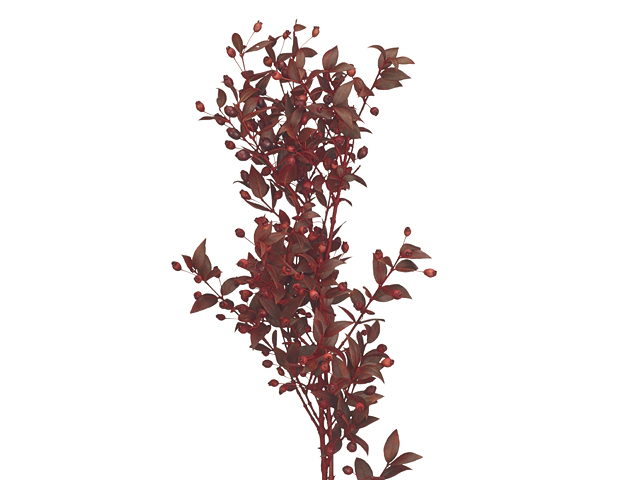Myrtus communis other

| Winter hardness | Limited (USDA-zone 8) |
| Flower color | White-white-155A |
| Light conditions | Sunny |
| Toxicity (if consumed) | Not or barely |
| Moisture requirements | Well-drained |
Myrtus communis, also known as Myrtle, is a beautiful and versatile plant that adds elegance to any garden. This evergreen shrub features glossy, dark green leaves and clusters of small, fragrant white-white-155A flowers. Although it may not tolerate harsh winter conditions, with proper care and protection, Myrtus communis can thrive in USDA-zone 8 and even in slightly colder regions.
One of the key factors to consider when planting Myrtus communis is its light requirements. This plant prefers sunny locations, where it can receive full to partial sunlight throughout the day. In areas with insufficient sunlight, it may not flower as abundantly or develop its characteristic dense foliage.
While some plants pose a risk of toxicity if consumed, Myrtus communis is considered non-toxic or barely toxic. This makes it a safe choice for households with children and pets, as accidental consumption is unlikely to cause severe harm. However, it is still advisable to keep an eye on curious pets and children to prevent any potential issues.
Moisture requirements play a crucial role in the overall health and growth of Myrtus communis. This shrub thrives in well-drained soil, as excessive moisture can lead to root rot and other fungal diseases. It is important to avoid overwatering and to ensure that the soil has proper drainage to allow excess water to escape. Regularly checking the moisture level of the soil and adjusting the watering schedule accordingly is essential in maintaining the health of Myrtus communis.
To protect Myrtus communis during the winter months, especially in regions with colder weather than USDA-zone 8, it is advisable to take some precautions. Applying a layer of mulch around the base of the shrub can help insulate the roots and protect them from freezing temperatures. Additionally, covering the plant with a frost cloth or burlap can provide extra protection from harsh winds and cold temperatures.
In terms of uses, Myrtus communis has a long history of being used for both ornamental and medicinal purposes. Its attractive foliage and delicate flowers make it a popular choice for gardens and landscaping. The aromatic leaves and berries of Myrtus communis are also sought after for their culinary and medicinal properties. They are often used in herbal teas, liqueurs, and various culinary dishes.
In conclusion, Myrtus communis, or Myrtle, is a stunning evergreen shrub that adds beauty and fragrance to any garden. While its winter hardiness is limited to USDA-zone 8, with proper care and protection, it can thrive in slightly colder regions as well. Its white-white-155A flowers, preference for sunny locations, non-toxic nature, and well-drained soil requirements make it an attractive and safe choice for both experienced and novice gardeners. Whether used for ornamental purposes or its culinary and medicinal benefits, Myrtus communis is a versatile and valuable addition to any garden.
Market availability index by month:
| Jan. | Feb. | Mar. | Apr. | May | Jun. | Jul. | Aug. | Sep. | Oct. | Nov. | Dec. |
|---|---|---|---|---|---|---|---|---|---|---|---|
| 3 | 2 | 3 | 3 | 3 | 4 | 3 | 3 | 3 | 3 | 2 | 2 |